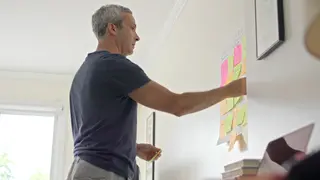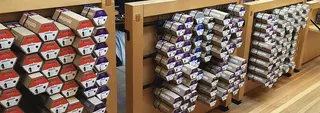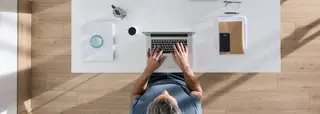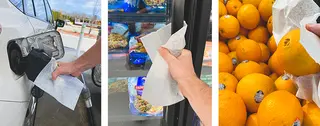
In the age of digital journalism, David Sax attributes much of his success in reporting and writing about business and cultural trends to paper.
The Toronto-based journalist, speaker and author has been published in The New York Times, Bloomberg and The Guardian. Most recently he wrote The Revenge of Analog: Real Things and Why They Matter. It looks at the comeback of tangible tools—like paper, film and vinyl—in businesses small and large and all over the world.
Use paper to ask questions.
As you move through any creative process, there are different goal posts of success. For me, it starts with crafting an initial idea, often a question, and wrestling it into something bigger. One of the things I’ve found when brainstorming and going through the creative process is that what you can do on a page of paper is limitless. When you want to get an idea out, it goes from your brain to the page instantly. It doesn’t have to look perfect. It just has to be there. That utility, speed and the informality allows you to just work through ideas and questions.
The initial question for the last book I wrote was: “Why are we seeing a resurgence of analog technologies like paper, vinyl records and film cameras at a time when we thought those things had been completely disrupted and almost decimated by digital technology?”
Use paper to process and contextualize information.
At each stage of my process, I use paper in different ways. One of the most important parts of writing a book for me is the interview process. I don’t record interviews. I go with a notebook and pen. I ask people questions, and I write down their answers.
The way I write those answers—which words I write down, which I leave out, what I highlight as they’re answering—informs my process and what information I’m bringing in. When you record something, you’re really looking for a transcript, but when you write down notes, you get that essence, that flavor. You make sure you write down the things that are very important that you know you’re going to use as quotes. But you don’t need everything. What you need is that conversation to keep moving.
Use paper to organize and see the big picture.
The process of creativity is inherently one of wrestling some order out of chaos. A computer screen is as flat and still as its dimensions. You can have 100 tabs or 50 tabs open, but the problem is that you can only see one part of the screen at a time. You have to manage the rest of that in your head, and you lose stuff. Information may look orderly on the screen, but it’s all jumbled in there. It’s hidden. You have to go find it in different folders, and you can never see the bigger picture. And the big picture is what you sometimes need to see. There is order found in getting away from that screen and putting things on paper.
When deciding on chapters for a book, I use large sheets of paper and sticky notes to help organize all the information, because it can be overwhelming. Once you see it, you form a greater sense of it in a physical space where you can work ideas around—organizing information in different ways by moving sticky notes up and down and drawing lines between them. Doing this provides a visual sense and changes your work, in a way. It puts it on one page, where you can wrestle it down and bring it back into that digital world.
Use paper to prepare for something big.
Outside of writing, the other half of my job is public speaking; I talk to groups of 100 or more people from around the world. When I walk up to the stage to start my talk, I pull out a piece of paper from my pocket with a few key points and examples that I’ve picked out to present to the particular group. I say, “Here’s my slide deck. Keep your eyes on me.” It’s incredible because it does elicit an eyes-on-me reaction.
I’ll often put that paper in a lectern or back in my pocket and don’t look at it. I’ve spent the past couple hours in the hotel room before, pacing up and down, looking at the papers I’m going through, and practicing my talk and what I’m going to say, and looking at the examples I have. And throughout the day before, I go through it again—writing those points out, starting with a bigger outline and then winnowing it down to five key points.
The paper in my pocket is almost a little safety blanket. It frees me on stage to talk, walk or joke if I want. I’m not held down by the slides I have to go through. Many speakers feel as though they need to have that digital presentation. You don’t need those slides up there. They don’t add anything. Just write it down, get your thoughts down, know what you’re going to do and go out there and captivate that audience.
If you want to achieve specific career outcomes, the way to use paper to achieve that success is to experiment. If paper helps someone do their job better, then that’s an edge. If paper helps someone think better, then that’s their creative advantage. If paper is the secret that allows an individual to create something that goes out in the world and actually becomes successful, then that’s an incredibly powerful tool.



